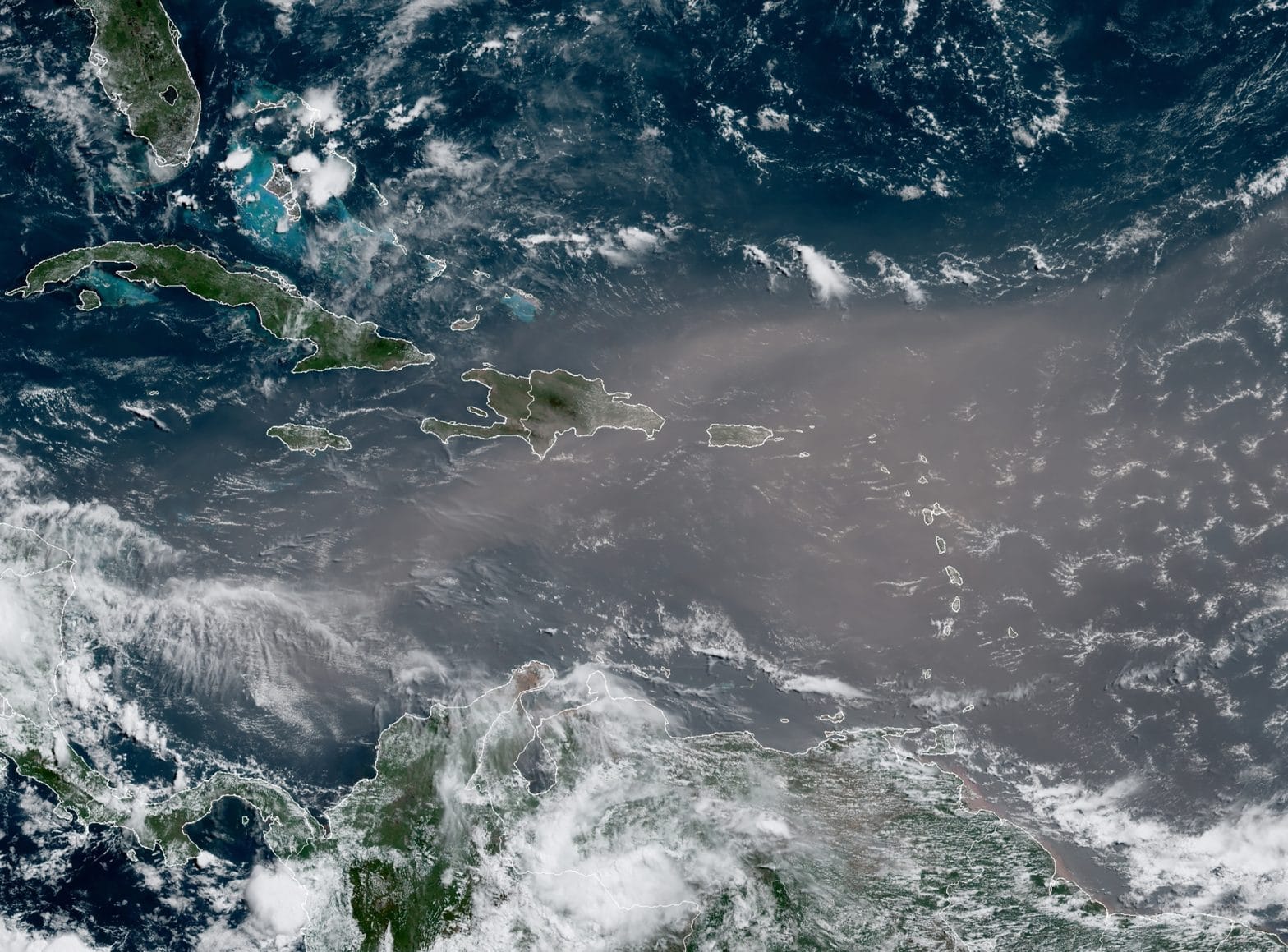Saharan Dust Plume Blankets Caribbean, Putting Hurricane Season On Pause

WASHINGTON –– A massive plume of dust from the Sahara Desert is slowly making its way from the west coast of Africa towards North and South America, creating drier-than-usual atmospheric conditions over the Atlantic Ocean.
The cloud, which astronauts have spotted all the way from the International Space Station, has already traveled thousands of miles and is now shrouding the Caribbean in a thick veil of dust and debris.
Residents of San Juan, Puerto Rico on Monday posted images of the city’s skyline engulfed in a light brown haze that experts say may be harmful for people with respiratory illnesses, adding another layer of health risks amid the coronavirus pandemic.
Dust plumes above the Atlantic Ocean — also known as the Saharan Air Layer phenomenon — usually start forming in late spring and fizzle out by the end of August, according to the National Oceanic and Atmospheric Administration.
Each year, hundreds of millions of tons of dust are picked up from African deserts and blown thousands of miles across the Atlantic, helping to build beaches in the Carribean and even fertilize soils in the Amazon.
But experts say this year’s plume is the thickest seen in more than half a century, spreading more than 2,000 miles across the Atlantic. It is expected to keep plowing through the Carribean before making its way into the Gulf of Mexico and parts of the U.S. South later this week, according to The Weather Channel.
The intensity of the phenomenon is a rare opportunity for the scientific community to study weather patterns in the Atlantic Ocean. NASA Astronaut Doug Hurley on Sunday posted a photo of the Saharan dust plume as seen from the International Space Station. “We flew over this Saharan dust plume today in the west central Atlantic,” said Hurley on Twitter. “Amazing how large an area it covers!”
Though the dust clouds may produce breathtaking sunrises and sunsets in the Carribean, the Florida Keys, and the Gulf Coast, they also lead to poor air quality that aggravates conditions like asthma and may impact people with allergies.
The National Weather Service last week urged New Orleans residents with respiratory problems to track their symptoms and take preventive medicine if needed.
On a brighter note, scientists believe the Saharan Air Layer could put a short-term damper on hurricane season. The strong winds and dry air linked to the phenomenon create unfavorable conditions for the formation of tropical cyclones in the Atlantic.
“A large plume of dust has moved off the west coast of Africa during the last few days,” said the Eastern division of the National Weather Service on Twitter last week. As this dry and dusty Saharan air layer moves across the tropical Atlantic toward the Caribbean it will help suppress the development of tropical systems.”
That’s good news for East Coast residents given that scientists say this year’s Atlantic hurricane season will be unusually active. However, the calming effect of the dust plume is only expected to last for a few days.
























